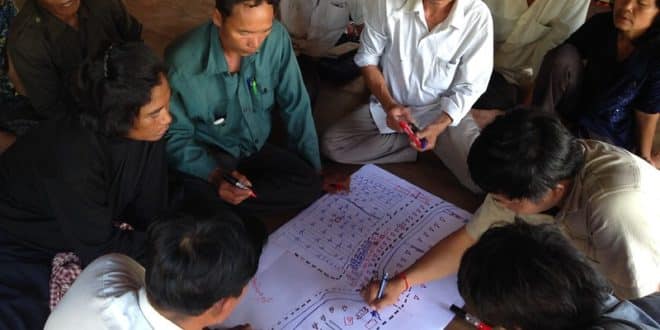Professional project management is a cyclical activity. Running a project efficiently and effectively is commonly called “Project Cycle Management” or PCM. Planning, implementation and monitoring as well as reviews and evaluations are always based on the results framework described in the Logical Framework Matrix.
The Project Cycle Management is the term that describes the management activities and decision-making procedures used during the life of a project. Planning, monitoring and evaluation are means to improve and ensure that the project generates the best possible effects.
Designing an international cooperation project is like planning a journey. I have to ask myself what I want to get out of the trip so that I know where to go, how much money I will need, with whom I can travel and when to travel.
This article is part of a series:
- The 4 phases of the project cycle
- What is the logical framework approach?
- What do you do during the identification phase of the project cycle?
- Most Significant Change: What it is and how to use it
- Results Indicators: What they are and how to use them
- Means of Verification: What it is and how to use it
First step: IDENTIFICATION of the problem to be solved
All projects are born out of a practical and systematic analysis of the needs that have been observed in a given context. Therefore, we can say that the first phase of the project cycle is Identification. In this phase, it is necessary to recognise the problem to be tackled, the actors involved and who need to be addressed in the following phases. We also have to start outlining the goals to be attained and the activities necessary to achieve the expected results. To give order and rigor to this first phase, a tool known and accepted by the vast majority of donors is usually used: the logical framework matrix.
Not sure how to write a logical framework?
Complete our eLearning module
Teaching logical frameworks to others?
Download a lesson plan kit
Returning to the metaphor of the journey, this phase corresponds to when I realise that I am tired (identification of the problem) and that I need a break (activity to be undertaken) to regain energy (expected result).
Second step: theoretical FORMULATION of the problem solution
Once we have identified the need and the logic of the intervention is clear, we move on to the second phase of the project cycle, which we call Formulation. As the name itself indicates, in this phase we have to set out in a descriptive and detailed way all the actions we want to undertake in order to achieve the expected results. The formulation, in addition to the part included in the identification, must reflect at least the indicators to measure the achievement of the objectives and results, the sources of verification of these indicators, the factors external to the project that may affect it, the feasibility studies, the timetable and the budget.
In my hypothetical trip, this is when I start to look for destinations, book accommodation, find out about the activities I could do in order to recover lost energies.
Third step: Practical project EXECUTION
When the project is formulated and has been submitted to a donor who has approved it, then we come to the third phase, the Execution of what has been planned. Implementation is the practical realisation of the project in order to achieve the results specified in the formulation document and thus the expected objective. Parallel to the execution is the monitoring, which aims to compare the work done with the work planned, and if there are significant differences, to apply corrective measures, either in the execution procedure or in the formulation of the project.
Everything is ready, the plane ticket is bought, the hotel is booked, I have the ticket for my idol’s concert and the taxi is waiting for me downstairs to take me to the airport: my journey begins!
Fourth step: EVALUATION of results achieved or not
Once the execution of the project is finished, we come to the last phase, the Evaluation. Evaluation consists of making an assessment of an ongoing or completed project. It is about determining the relevance of the objectives and their degree of achievement, the efficiency in terms of development, effectiveness, impact and feasibility. An evaluation should provide credible and useful information that will allow for a progressive improvement in project management.
It is time to look at the photos, put the memories in the memory box and ask myself if I have been able to rest and to recharge my batteries. If yes, then I have planned and managed my trip well. If not, it is necessary to understand what didn’t work in order to improve for the next time.
As we have been able to understand, a project cannot emerge without solid foundations that have been recognised and discussed with the project’s population. If we do not dedicate enough time to this first phase, it is very likely that the whole implementation will fall down without leading to the expected results.
The fundamental principle that humanitarian actors need to be aware of and respect is that community development cannot come from outside: it must be born, grow and consolidate within the community itself. What we can do as development actors is to accompany processes from a technical and economic point of view, but under no circumstances can we decide what is right and what is wrong for the development of a community without an effective participatory process.





